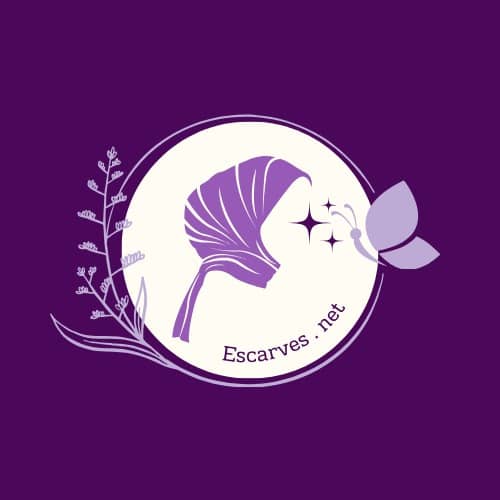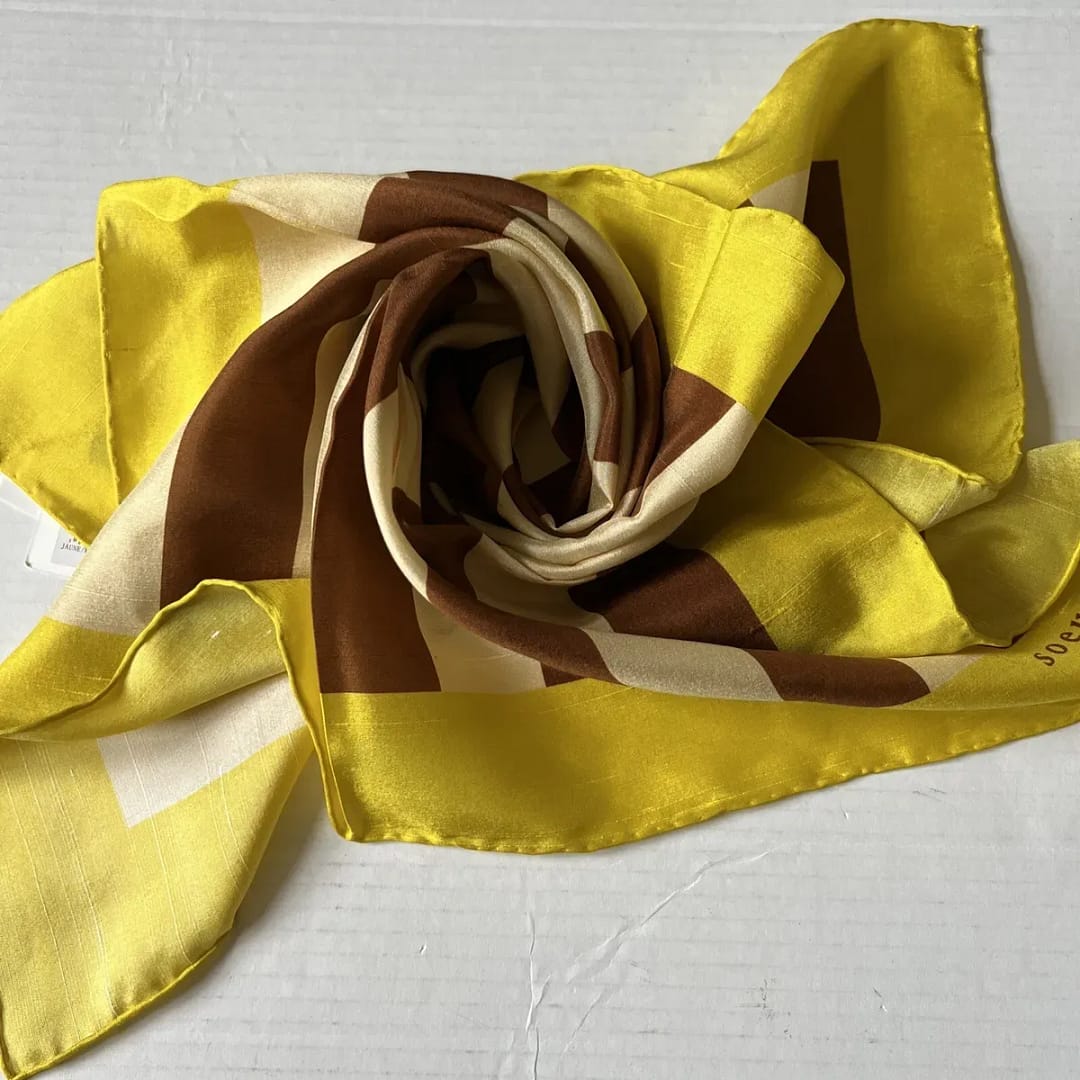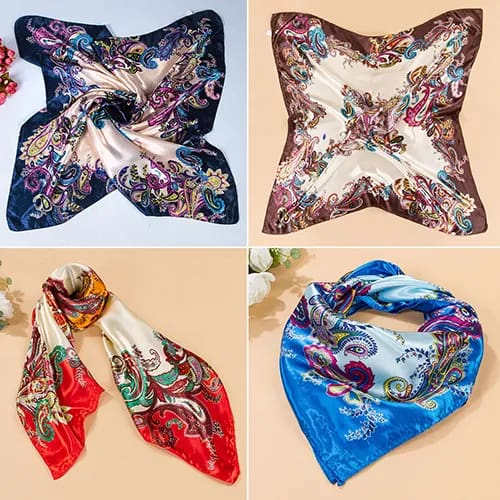The humble scarf has been a hallmark of style and comfort across cultures and centuries. But why settle for a scarf that anyone can buy at any corner store, when you can craft one that’s entirely – uniquely– your own? Crochet scarves not only radiate a cozy DIY charm, but they also serve as an expressive canvas for your personality. With the right tools and a dash of creativity, you’ll be amazed at the elegance and warmth you can create with just a skein of yarn and a crochet hook. Unravel the craft of creating your own crochet scarf with this comprehensive guide.
Choosing Yarn and Tools
Your crocheting adventure begins at the ‘Yarn Mountain’, where decisions about color, texture, and weight are waiting for you. These initial choices are the DNA of your scarf, defining its character and feel. Yarn weight determines the thickness and warmth of your scarf, while color and texture are the strokes that paint the story of your personal style.
To ensure a smooth crafting experience, select yarn that matches the suggested weight on your chosen pattern – be it light, medium, or bulky. Comfort is key for an item you’ll be wearing, so don’t forget to consider any sensitivities you might have to certain fibers. Your crochet hook, the trusty companion in weaving this yarn tale, should correspond with your yarn’s weight – thicker yarns call for bigger hooks, while finer yarn craves the touch of a smaller hook.
Basic Crochet Stitches
This is your crochet foundation – the very essence of your scarf’s fabric. You’ll familiarize yourself with the typical suspects of the crochet stitch world. The chain stitch, single crochet, half double crochet, double crochet, and slip stitch are the primary stars. Learning these is akin to mastering the alphabet; with them, you can spell out any word, create any design.
To get you started, here’s a quick primer:
- Chain Stitch (ch): This is the starting point for most crochet projects.
- Single Crochet (sc): Essentially weaving the yarn through a loop.
- Double Crochet (dc): A slightly taller stitch, creating a looser weave.
Work through these stitches initially with scrap yarn before you commit to your scarf yarn, and practice until your tension is just right. Remember, it’s all about evenness!
Crochet Scarf Patterns for Men and Women
When crafting crochet scarves, balancing style with personality is key, especially when considering designs for both men and women. Masculine patterns often feature bolder, geometric lines and a subdued color palette, while ensuring the design remains stylish and adaptable to any man’s wardrobe. A ribbed crochet pattern, for instance, mimics the texture of a classic knit scarf, making it a fantastic choice for anyone seeking a more traditional look with a handmade touch. Using darker shades like charcoal, navy, or deep green can add a sophisticated edge suitable for both casual and professional settings.
On the flip side, complexity and vibrant colors take the lead in designs more traditionally feminine, adding an air of elegance and whimsy to the scarf. However, in the spirit of breaking stereotypes and encouraging self-expression through crochet, remember that color and pattern are truly a personal choice. Many modern patterns are designed to be unisex, focusing on texture and versatility instead. Chevron, houndstooth, and basket weave patterns offer timeless appeal that can be easily tailored with color changes to suit anyone’s style.
Regardless of the pattern you choose, always remember to make it your own. Crochet allows for unparalleled freedom in customization — be it with a surprising splash of neon in a sea of grey or a unique fringe detail. Friendly reminder: ensure your chosen pattern fits the yarn weight and hook size you’ve selected. Happy crafting!
Crochet Patterns for Scarves
The pattern is the narrative of your crochet scarf. It can be as complex or as simple as you wish, but every pattern will guide you through a sequence of stitches that results in a particular design.
Traditional crochet scarf patterns have timeless appeal, offering a chance to craft something that bridges generations. However, if you’re feeling a more contemporary vibe, there’s a myriad of modern patterns that push the envelope with creative and intricate designs.
It’s good to start with a basic pattern to find your crochet rhythm:
- Choose Your Yarn and Hook: Refer to your chosen pattern for the recommended hook and yarn weight.
- Foundation Chain: Start with a chain, the length of which will determine the width of your scarf.
- First Row: Work back along the foundation chain with a row of stitches (usually single or double crochet).
Keep count of your stitches to ensure the symmetry and shape of your scarf.
Enhancing Your Scarf

Now that the canvas of the scarf is crafted, it’s time to paint in the details. Tassels, fringe, and buttons add visual interest and can completely change the look of your project. You might also consider embroidery or appliqué for a more elaborate touch.
Here’s how to add a tassel:
- Cut Yarn into Strands: These should be twice the desired length of the tassel.
- Gather Strands and Fold in Half: This forms the tassel
- Insert a Crochet Hook into a Stitch on the Scarf: Pull the tassel loop through.
- Pull the Ends of the Tassel Through the Loop: And secure to one side.
Customization is where the magic happens – it’s what elevates a homemade scarf from good to great, from personal to symbolic.
Styling Tips
A crochet scarf is not just an accessory, it’s a statement. How you wear and style your scarf can completely transform an outfit. Play with different drapes, knots, and wraps to give your scarf dimension and complement your personal style.
A few simple styling suggestions:
- The Classic Wrap: Drape the scarf evenly around your neck and tuck the ends through the loop.
- The Infinity Look: Before wrapping, twist the scarf to create a figure-eight and loop it over your head, pulling one side over the other.
- The Cozy Cowl: Layer the scarf around your neck multiple times, creating a plush cowl.
Your crochet scarf is as versatile as it is beautiful, so don’t be afraid to experiment with different outfits and looks.
Crochet Scarf Maintenance
Ah, the joy and pride of finishing your crochet scarf! It’s soft, it’s warm, and it’s a testament to your craft and creativity. But like all cherished items, it needs a bit of TLC to keep it looking its best. Here’s how to care for it properly, ensuring it stays as perfect as the day you finished it.
Cleaning Your Crochet Scarf
Always check the yarn label for washing instructions, as different fibers have their own needs. Handwashing in cool water with a mild soap is generally a safe bet for most yarns. Gently squeeze (don’t wring!) the water out and lay it flat on a towel to air dry. This helps maintain its shape and texture.
Storing Your Crochet Scarf
When not in use, especially during the warmer months, your scarf deserves a cozy spot to rest. Store it in a clean, dry place, folded neatly or rolled to prevent creases. If you’re worried about moths, consider adding a sachet of lavender or cedar blocks to ward them off — they’re natural repellents that can help protect your scarf.
With the right care, your crochet scarf can not only be a stylish addition to your wardrobe but also a lasting keepsake or a heritage piece to pass down through generations. A little effort in maintenance goes a long way in preserving your handcrafted treasure.
Tips and Tricks for Crocheting Scarves Quickly and Efficiently
In the wonderful world of crochet, time is truly of the essence, especially when you’re itching to wear your newly crafted masterpiece or gift it to someone special. Here are a few friendly tips and tricks to help you crochet scarves more quickly and efficiently without sacrificing quality:
- Use Bulky Yarn and a Larger Hook: The thicker your yarn and the bigger your hook, the faster you’ll see your scarf come to life. Bulky yarns not only work up quicker but also create a wonderfully cozy scarf perfect for cold days.
- Opt for Simple Stitch Patterns: While intricate stitches can be beautiful, they can also be time-consuming. Stitches like the double crochet allow you to cover more ground faster. Remember, simplicity has its own charm.
- Keep a Consistent Tension: Maintaining a steady tension is vital not only for the look of your final project but also for speed. Too tight, and you’ll struggle with each stitch; too loose, and you may need to redo your work. Find a balance and stick with it.
- Chainless Starting Stitches: Learn the chainless starting double crochet for starting new rows. It looks neater and saves time since you’re jumping straight into the action without chaining.
- Plan Ahead: Before you start, ensure you have enough yarn for your project to avoid unnecessary trips to the store. Also, read through the pattern to visualize the steps and identify any areas where you might run into trouble.
- Join New Yarn with a Magic Knot: Instead of weaving in ends later, join new yarn by using a magic knot as you go. It’s secure and saves you the hassle of tidying up those pesky loose ends afterward.
- Set Realistic Goals: Break your project into smaller sections and set goals for each. Whether it’s completing a certain number of rows each day or setting aside specific times to crochet, a structured approach can help speed up the process.
Remember, though speed is desirable, the joy of crocheting comes from the process itself. Happy crocheting!
Conclusion
Crafting a crochet scarf is a deeply satisfying project that blends the warmth of tradition with the fire of creativity. Whether you are a beginner with yarn or a seasoned crochet veteran, undertaking a crochet scarf is as much about the process as it is the final product. It’s a chance to slow down, express yourself, and create something that truly belongs to you.
With each loop and twist, you bring your vision to life, and with it, the potential for a beloved wardrobe staple or a thoughtful, one-of-a-kind gift. Pour some love into your stitches, and before you know it, you’ll have a scarf that’s not just a cover for the cold, but a story waiting to be told. It’s time to pick up your hook and begin the next chapter in your crafting tale. Happy crocheting!
FAQs
Q: How long does it take to crochet a scarf?
A: The time it takes to crochet a scarf can vary widely based on the complexity of the pattern, your skill level, and how much time you dedicate to crocheting each day. A simple scarf could take a few hours for an experienced crocheter, while beginners might need a few days.
Q: Can I crochet a scarf with any type of yarn?
A: Absolutely! You can crochet a scarf with virtually any type of yarn. However, the choice of yarn will affect the texture, warmth, and overall look of your scarf. Consider what you want in a scarf and choose your yarn accordingly.
Q: What if my scarf is curling or its edges are uneven?
A: Curling can occur if stitches are too tight or the wrong hook size is used. Try practicing consistent tension and check if you’re using the recommended hook size for your yarn. For uneven edges, make sure you are counting your stitches correctly in each row.
Q: How can I make my crochet scarf wider or narrower?
A: The width of your scarf is determined by the number of chains in your initial foundation chain. To make your scarf wider, simply start with more chains; to make it narrower, start with less.
Q: Is it possible to crochet a scarf without any prior experience?
A: Yes! Many people have successfully crocheted their first scarf with no prior experience. It might be challenging at the start, but with patience and practice, you’ll improve. Consider starting with a simple pattern and practicing your stitches before beginning your scarf.
Q: How do I wash my crochet scarf?
A: The best way to wash your crochet scarf depends on the yarn you used. Check the yarn label for washing instructions. Generally, hand washing in cool water with a mild detergent and laying flat to dry is a safe option.







